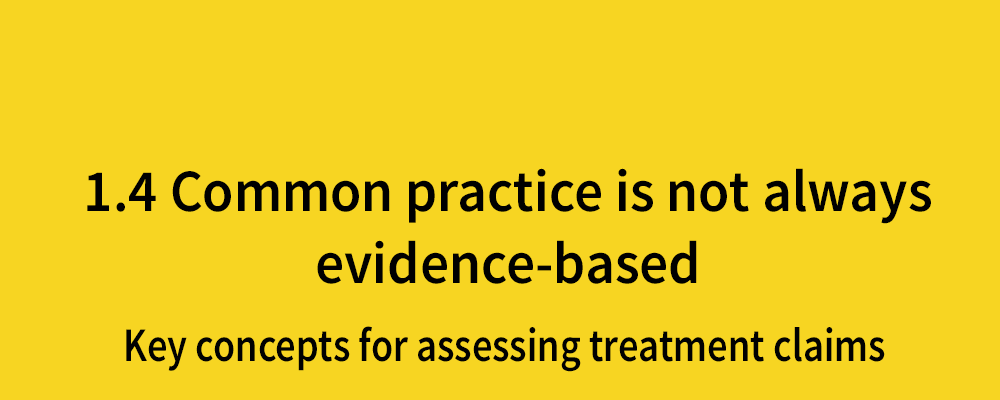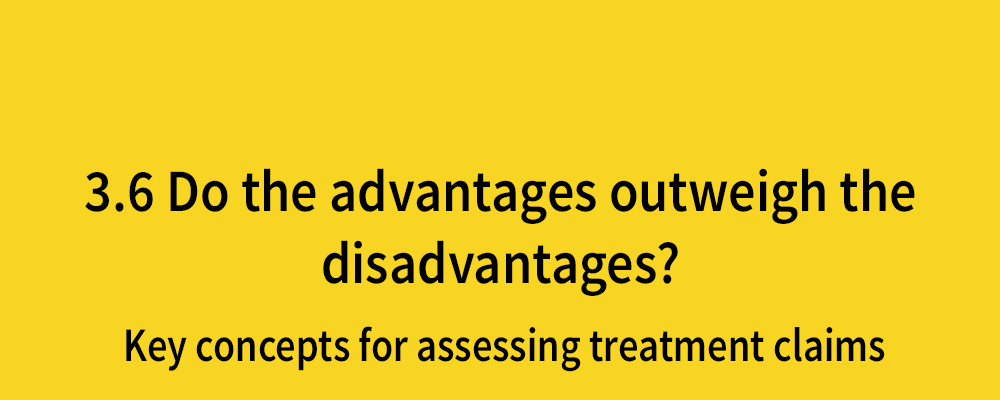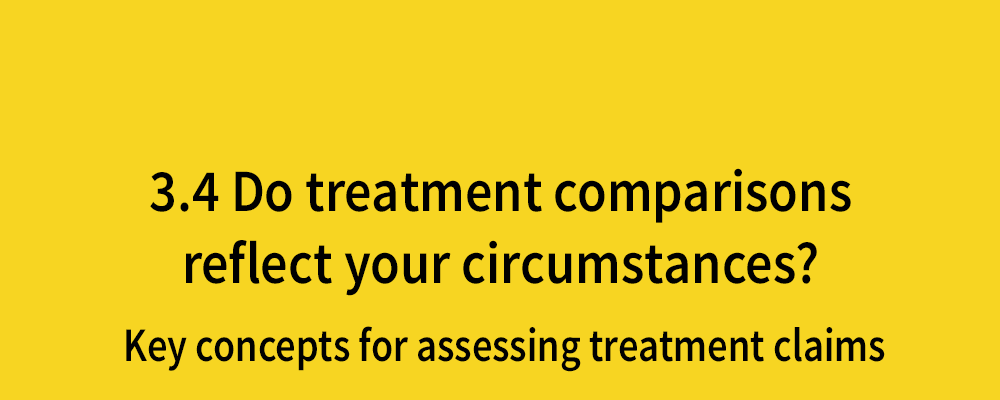Common practice is not always evidence-based
Posted on 29th June 2017 by John Castle

This is the fourth in a series of 36 blogs based on a list of ‘Key Concepts’ developed by an Informed Health Choices project team. Each blog will explain one Key Concept that we need to understand to be able to assess treatment claims.
Common sense medicine
Many widely used treatments have been around for years, without them ever having been rigorously tested for their current use. What does this approach neglect? Well, it neglects the harms that the treatment may have that we’ve never noticed or bothered to look for. If a treatment has been around for so long and nobody’s noticed any serious side effects, then people may assume there are none. Additionally, a treatment that’s been used for a long time may well be safe, but do we actually know if it is effective? Or do we just believe it is effective because it’s so well-established?
Every treatment should be evaluated in rigorous research and in systematic reviews of all of the relevant evidence. There are several lessons in the past that emphasise this. I’ve already referred to anti-arrhythmic drugs in patients having a heart attack, Dr. Spock and Diethylstilbestrol (see Key Concept 1.1 ‘Treatments can harm’). Below are two more examples of practice not being evidence-based and the consequences.
Example 1: Hormone-replacement therapy (HRT)
In women going through the menopause, HRT is effective in reducing the distressing hot flushes that are commonly experienced. There is evidence that HRT may also help in preventing osteoporosis (bone thinning).
After the introduction of HRT, more and more beneficial effects were claimed to result from extending its use. For example, HRT was claimed to prevent heart attacks and strokes, both of which can be deadly or severely disabling. In the past, because of such claims, millions of women – advised by their doctors – began using HRT for longer than they should have done. The evidence underlying these claims was very shaky but it took years for this to be highlighted and accepted in the medical community because of the wide-use of HRT and its apparent safety.

Take heart attacks. For over 20 years, women were told that HRT would reduce their risk of these. This was based on the results of studies that were biased and poorly conducted. Then, in 1997, there was a warning that the advice might be wrong: researchers from Finland and the UK reviewed, systematically, the results of well-conducted studies [1]. They found that, far from reducing the risk of heart disease, HRT might actually increase it. Even after the publication of this review, some prominent commentators dismissed this conclusion. However, the link between HRT and increased heart attacks has since been robustly demonstrated in two large, well conducted clinical trials.
Had the effects of HRT been assessed properly when it was first introduced and then monitored throughout its use, women would not have been misinformed. To make matters worse, we now know that HRT increases both the risk of stroke and of developing breast cancer [2].
HRT continues to be a recommended treatment for women with menopausal symptoms [3]. However, it is tragic that it was so heavily promoted as a way of reducing heart attacks and strokes. Although the increased chance of these serious conditions is modest, the total number of women affected is large simply because HRT had been so widely prescribed to women for long term use. So, it is likely that there are thousands of women whose lives were cut short by this misinformation.
Example number 2: Evening primrose oil for eczema

Even if inadequately assessed treatments do not kill or harm, they can waste money. Eczema is a distressing skin complaint affecting both children and adults. The skin lesions are both unsightly and very itchy. Although the use of steroid creams can help, there were concerns about their side effects, such as discoloration or thinning of the skin. In the 1980s a natural plant oil extract – evening primrose oil – emerged as a possible alternative to steroids, with fewer side-effects [4].
Evening primrose oil contains an essential fatty acid called gamma-linoleic acid (GLA) and there were plausible reasons for using it. One suggestion, for example, was that the way in which GLA was transformed (metabolized) within the body was impaired in patients with eczema and this might be contributing to development of the disease. So, theoretically, giving GLA supplements should help. Borage oil, also known as starflower oil, contains even higher amounts of GLA and this was also recommended for eczema. GLA was believed to be safe, but was it effective?
Numerous studies were done to find out but they gave conflicting results, and the published evidence was heavily influenced by studies sponsored by the companies making the supplements. In 1995, the Department of Health in the UK asked researchers who were not associated with the manufacturers of evening primrose oil to review 20 published and unpublished studies. No evidence of benefit was found [5].
The Department never made the report public because the manufacturers of the drug objected. But five years later another systematic review of both evening primrose oil and borage oil was conducted by the same researchers. This time it was published, and showed that in the largest and most complete studies of GLA there was no convincing evidence that these treatments were helpful.
Despite this, GLA was not abandoned, and researchers were certain there was still one unturned stone. They believed that GLA did work but perhaps only in very high doses. In 2003, even this claim was knocked on the head by a carefully conducted fair test [6].
By the time these results were published, the UK Medicines Control Agency (MCA, which subsequently became the Medicines and Healthcare products Regulatory Agency, MHRA) had already (and, at last), in October 2002, withdrawn the product licences for two major evening primrose oil preparations because there was no evidence of effect.
Nevertheless, since no concerns were raised about its safety, evening primrose oil is still widely available over the counter as a ‘dietary supplement’ for various conditions – at high prices. Regarding its use for eczema, claims of effectiveness are couched in vague terms such as ‘people with eczema may find relief’, ‘may be helpful’ and ‘has certain medicinal properties that may act as an anti-inflammatory for conditions such as eczema’.
Conclusion
These examples demonstrate the consequences of using treatments that have no evidentiary support but are continually used largely because they have been around for a long time. We need to avoid this for several reasons: first and foremost, the potential harms are not clear. Additionally, they waste resources and they may raise individuals’ hopes unjustifiably.
When prescribing a treatment or receiving a treatment, we should always strive to establish the evidence-base of that treatment. Common practice is not always evidence-based and this has many times proven to be fatal. We simply cannot assume that a treatment is safe or effective just because it has been used for a long time. Awareness of – and objection to – this issue is something that both patients and practitioners have a responsibility for.




